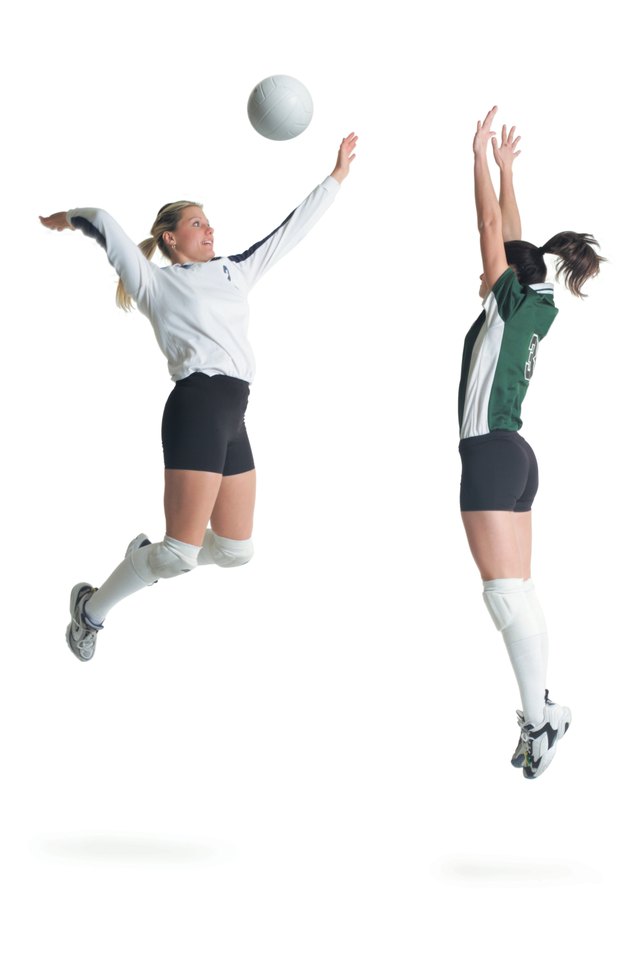Drills for Volleyball Tryouts

Created by William Morgan in 1895, volleyball has developed into a widely popular sport played in gymnasiums and on beaches around the world. While anyone can participate, truly great volleyballers practice skills such as serving, passing, blocking, spiking and setting using time-tested drills. These drills increase vertical leap, increase accuracy and confidence, and improve agility for peak game-time performance. As volleyball great Misti-May Treanor says, "You just have to have the skills."
Serving
Every player serves during a game and great teams serve well consistently. Most experienced players serve overhand because it is the most difficult for opponents to successfully return. Players should practice by tossing the ball consistently to a height that they find comfortable for hitting over the net. At the beginning of practice, divide players in two groups and have them warm up by serving balls to each other. Beginners should focus on getting the ball over the net; intermediate players should hit hard and aim low; advanced players should serve the ball to specific locations.
Passing
Like serving, every player must pass or "bump." Without proper passing form, the team may suffer a penalty and earn a point for the opponent, but great passers not only demonstrate great form, they send the ball consistently to the setter with little or no spin and high in the air. Two players can easily pass to each other, but to make it more challenging, stand on a chair next to the net and spike the ball to the players on the court. Passers should make it easy for the setter to set up the spike.
Spiking, Setting and Blocking
Unlike serving and passing, not every player spikes, sets and blocks. Begin with one setter standing at the center net and two blockers on the opposite side, one at center and one opposite the line of hitters -- or spikers -- who will take turns. The setter should toss the ball to the first hitter, who will pass it appropriately back to the setter. The player sets the ball, the hitter approaches, jumps and attempts to smack the ball onto the opposite court. The blockers meet on the opposite side of the net, jump concurrently and attempt to block the ball. Following the play, one blocker moves to the back of the hitters' line and the hitter becomes one of two blockers. Excellent hitters snap their wrists and send the ball to the ground in a location of their choosing; excellent blockers anticipate these actions.
Agility
While many don't associate volleyball with speed or strength, great players demonstrate agility and quick reactions on the court. Practice these important skills with the two-pile game simulator. In the two-pile, one player lies on top of the other, the coach slaps the ball, throws it up high and both players jump up quickly. The bottom player must reach the ball first and pass it to the top player, who sets it. The bottom player hits the ball onto the opposite court.
Communication
The best volleyball teams communicate loudly and frequently during games. One popular drill is the two-on-six game simulator, where a team of two take on a team of six. While the two-player game is more physically challenging, six-player teams must employ better communication skills because of the number of people on the court. Silence often means a ball hitting the floor, untouched -- and a point lost.
Nevertheless, whether you play on the beach with two or in the gym with six, simulating games helps teams learn court boundaries, encourages communication and allows the players to develop a rhythm. Like most sports, volleyball is much more fun when you're good at it -- and you will be after practicing these basic drills.
References
Writer Bio
Lisa Bigelow is an independent writer with prior professional experience in the finance and fitness industries. She also writes a well-regarded political commentary column published in Fairfield, New Haven and Westchester counties in the New York City metro area.
